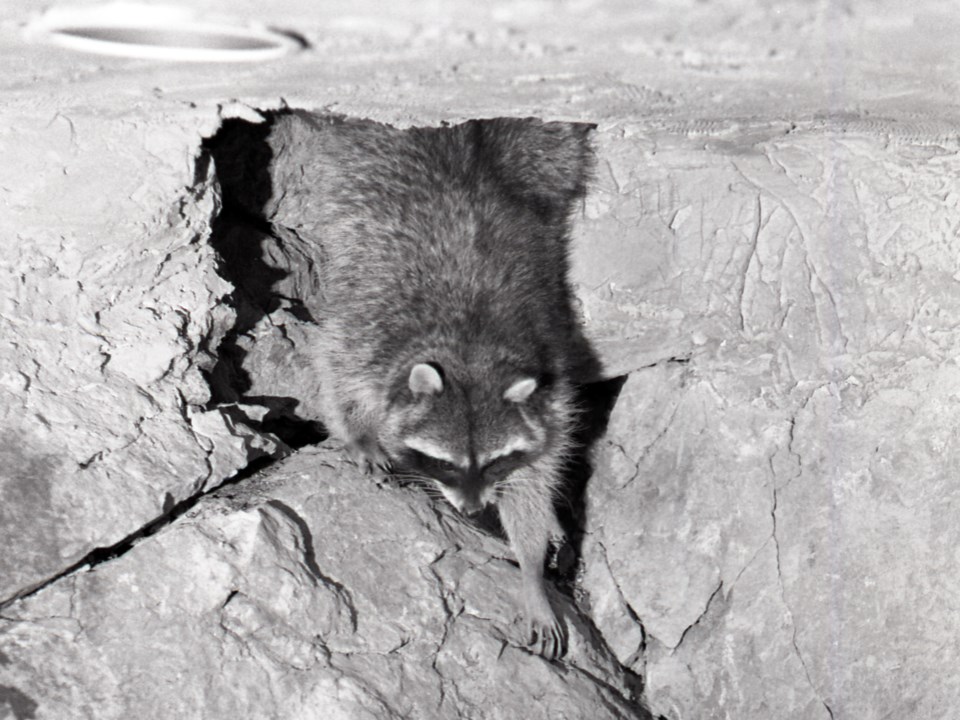Whistler is well known for its stunning natural environment. On the doorstep to nature it is not uncommon to see wildlife in and around town. I recently saw a raccoon using the pedestrian crossing near Marketplace, and on the same day I watched a coyote stroll through the playground in the village. A few days later, many people watched a bear cruise through that same playground.
This region has always been a hub for nature, but with an increase in development, we are also changing the habitat for local wildlife. While humans are the biggest threat to most wildlife in Whistler and throughout the world, raccoons and a few other animals thrive in human-altered environments.
Before the lifts started turning, when Whistler was known as Alta Lake, a study of the local mammals was completed by Kenneth Racey and Ian McTaggart Cowan. After observing and collecting ecological data for a combined 22 years, including talking to many local trappers familiar with the local wildlife, Mammals of the Alta Lake Region of South-western British Columbia was published in 1935. At this time it was noted that raccoons do “not occur regularly in the district.” Tracks of raccoons passing through the valley had only been identified twice throughout the study.
However, as the town started to grow rapidly, raccoons started to find that humans could be a great source of food and shelter. When longtime local, Trudy Alder, moved to Whistler in 1968, the raccoons had already started to train the locals, or vice versa, according to Trudy, who remembered, “We lived in harmony with many of the animals in our everyday lives. There were plenty of animals; the raccoons thought they were our pets and we could easily train them to eat from our hands.”
Raccoons are smart, bold and inquisitive, allowing them to quickly adapt their behaviour to the changed environment. Additionally, their paws are hypersensitive and tactile, so they can easily get into things for further mischief.
Populations of raccoons in Whistler have increased with the human population, and the same phenomenon can be seen in many urban areas where raccoon populations increase with human development. Raccoons that live in urban environments have much smaller home ranges and live in higher densities than in their natural habitats. They are omnivorous scavengers and humans provide great sources of high-energy food through garbage, pets and gardens. Why did the raccoon cross the road? Probably for food.
Another mammal that has increased in numbers since 1935, although for different reasons, is the beaver. According to Mammals of Alta Lake, at the time of publication, beavers had been hunted to local extinction in the valley. Now that the hunting has ceased, the beaver population has bounced back. Today you can see signs of active beavers around Whistler’s wetlands, and, if you are lucky, you might see the beaver itself.
Some things change, while others stay the same. There is an animal encounter recorded in Mammals of Alta Lake that could have happened today. Between 1927 and 1928, trapper and early Alta Lake resident, John Bailiff, caught 28 flying squirrels in his traps. The squirrels were being stored in a freezer when a sneaky marten weaselled in and stole them. Today, martens are still known to weasel into backcountry huts and on-mountain restaurants, helping themselves to food (and sometimes ski gear).
For more on local natural history, drop in to the Whistler Museum’s Discover Nature pop-up museum at Lost Lake Park. Open Tuesday through Friday, 11 a.m. to 5 p.m. until the end of August.




